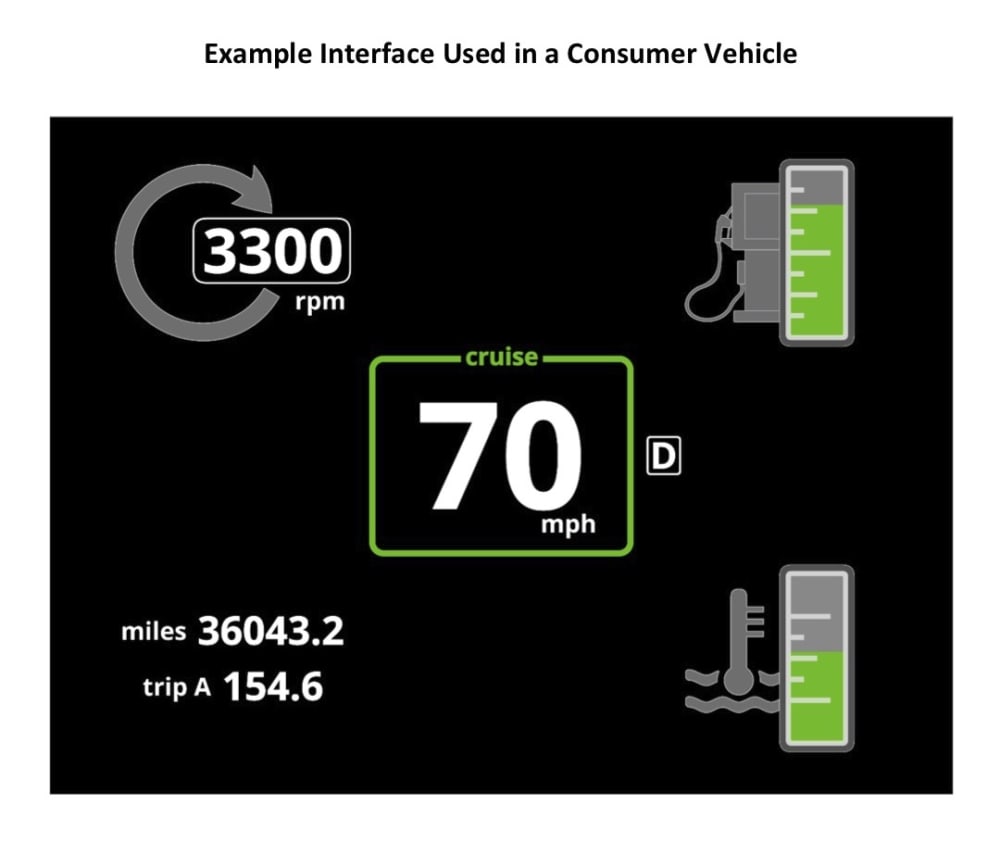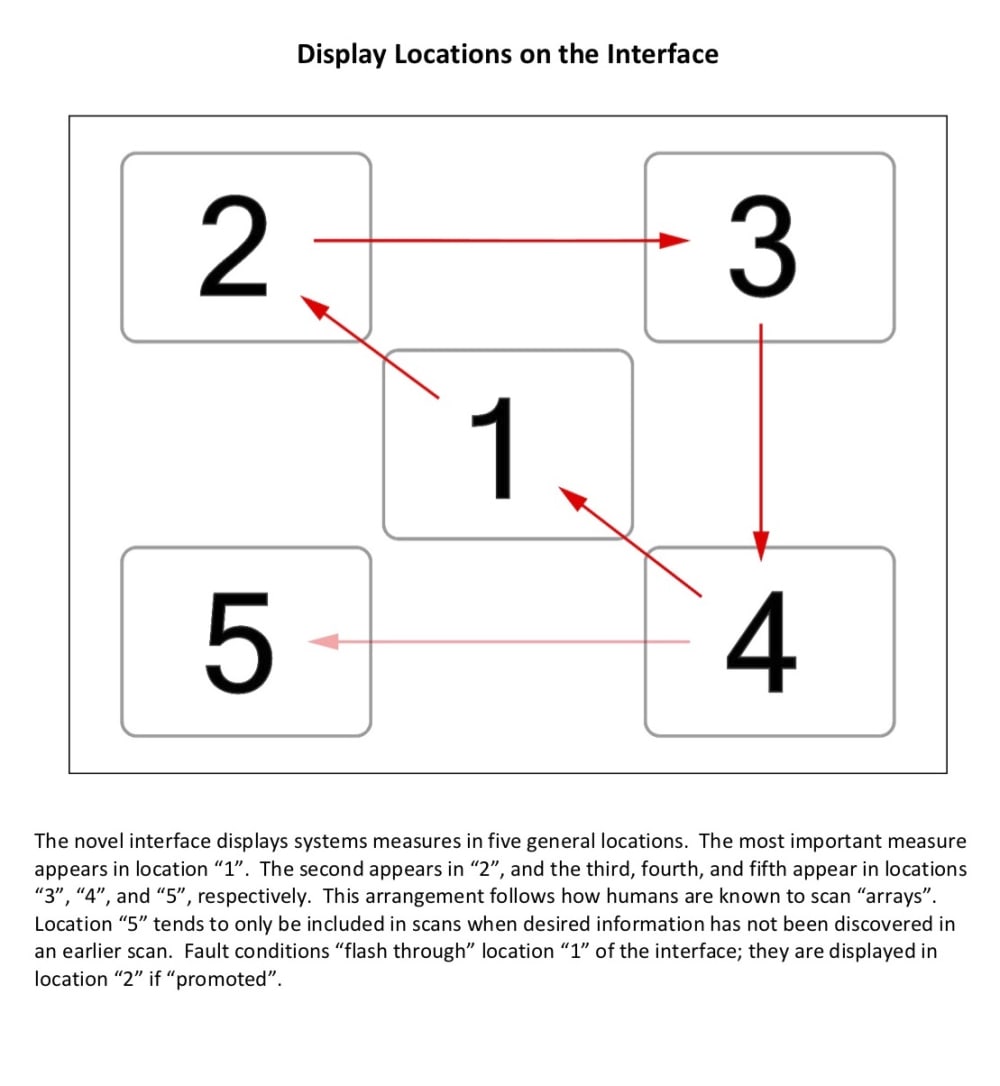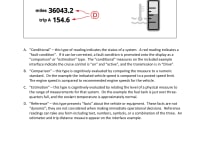Traditional instrument clusters pose problems when used while operating vehicles and industrial equipment. Why? They are difficult to read quickly. That delays operator responses, both to information in the instrument cluster and to the environment around the operator. Delays can lead to accidents causing property damage, personal injuries, and deaths.
The paragraphs below describe a novel visual interface that has been shown to allow vehicle operators to respond 1.201 seconds, or 32.9 percent faster, than to a traditional instrument cluster. In functional terms, that difference equates to 105 feet of travel at a speed of 60 miles per hour. That can be the difference between life and death.
What is the problem with traditional instrument clusters? Most of them use fixed analog gauges, a type of human-machine interface that was developed during the Nineteenth Century to measure pressure in steam boilers. Their pointer-on-scale interface has changed very little since analog gauges were developed. It can take as many as eleven perceptual and cognitive steps to read an analog gauge in a simple instrument cluster. It takes many more steps to read an analog gauge in an expanded group of gauges used to monitor complex equipment. Each of those steps takes time. In a vehicle, for example, that is time an operator’s eyes are “off the road” and their responses are delayed.
The novel interface takes a “Twenty-first Century approach” to monitoring systems. It uses cognitive and human factors principles to sort, organize, and depict systems readings on a flat panel display. These scientific principles facilitate rapid perception and understanding, resulting in faster operator response times.
“Artificial intelligence” in the interface software can monitor an unlimited number of systems. Using a “dynamic sort”, the software “promotes” and “demotes” readings on and off the display. This ensures an operator sees essential information on the display “in real time”. This allows machines as complex as aircraft and deep well drilling rigs to be monitored on a single flat panel display.
The software also categorizes systems readings into four “types”, based on the perceptual and cognitive operations used to understand them. When displayed, each type takes a form and color that facilitates rapid perception and understanding. Readings appear in specific areas of the display based on their importance to operation of the vehicle or equipment. These several methods of the interface provide systems measures that can be read in six or fewer perceptual and cognitive steps.
A functional unit of the novel interface includes a flat panel display, circuit board, wire harness, and housing. Interface software runs in a microcontroller or microprocessor on the circuit board. Systems information is received through connections to interface devices located on the circuit board. Unit costs will be the same, to much less, than traditional instrument clusters.
The potential market for the novel interface appears large. As an example, 13.43 million vehicles were manufactured in North America in 2020. The industrial equipment market is difficult to estimate; it will likely exceed one million units per year.
Like this entry?
-
About the Entrant
- Name:William Havins
- Type of entry:individual
- Software used for this entry:RhinoCAD and Adobe Illustrator
- Patent status:patented








